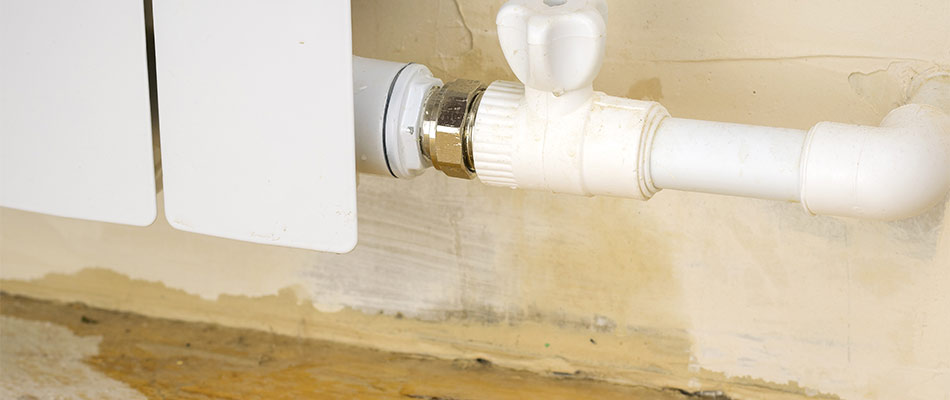Unmasking Concealed Water Line Leaks: 6 Effective Detection Hacks
Unmasking Concealed Water Line Leaks: 6 Effective Detection Hacks
Blog Article
Here below you can get a bunch of good expertise about Locating water leaks.

Early detection of leaking water lines can mitigate a possible calamity. Some small water leakages might not be visible.
1. Examine the Water Meter
Every home has a water meter. Checking it is a proven way that helps you find leaks. For beginners, switch off all the water resources. Ensure no one will flush, utilize the faucet, shower, run the washing device or dish washer. From there, most likely to the meter and also watch if it will certainly alter. Because no one is using it, there should be no movements. If it moves, that shows a fast-moving leakage. If you spot no adjustments, wait an hour or 2 and also inspect back again. This implies you might have a slow-moving leakage that could also be underground.
2. Check Water Intake
If you find unexpected adjustments, despite your consumption being the same, it indicates that you have leakages in your plumbing system. An unexpected spike in your expense shows a fast-moving leakage.
Meanwhile, a constant increase monthly, even with the same behaviors, reveals you have a slow-moving leakage that's also slowly rising. Call a plumber to extensively check your residential or commercial property, particularly if you really feel a cozy location on your flooring with piping beneath.
3. Do a Food Coloring Examination
When it comes to water usage, 30% comes from commodes. If the color in some way infiltrates your bowl throughout that time without flushing, there's a leak between the tank and also dish.
4. Asses Exterior Lines
Do not neglect to inspect your outdoor water lines also. Test faucets by connecting a yard hose pipe. Needs to water seep out of the link, you have a loose rubber gasket. Change this and make certain all links are limited. It will help get it skillfully examined and preserved each year if you've obtained a lawn sprinkler system. One little leakage can waste tons of water and also increase your water costs.
5. Assess the circumstance as well as check
Home owners need to make it a routine to examine under the sink counters and also even inside closets for any bad odor or mold development. These 2 red flags suggest a leakage so punctual focus is required. Doing routine inspections, also bi-annually, can save you from a significant problem.
Inspect for stainings and deteriorating as most appliances as well as pipelines have a life expectations. If you think dripping water lines in your plumbing system, do not wait for it to escalate.
Early detection of dripping water lines can minimize a prospective calamity. Some tiny water leaks might not be noticeable. Examining it is a proven means that assists you discover leaks. One little leakage can throw away bunches of water and also surge your water expense.
If you suspect dripping water lines in your plumbing system, do not wait for it to intensify.
WARNING SIGNS OF WATER LEAKAGE BEHIND THE WALL
PERSISTENT MUSTY ODORS
As water slowly drips from a leaky pipe inside the wall, flooring and sheetrock stay damp and develop an odor similar to wet cardboard. It generates a musty smell that can help you find hidden leaks.
MOLD IN UNUSUAL AREAS
Mold usually grows in wet areas like kitchens, baths and laundry rooms. If you spot the stuff on walls or baseboards in other rooms of the house, it’s a good indicator of undetected water leaks.
STAINS THAT GROW
When mold thrives around a leaky pipe, it sometimes takes hold on the inside surface of the affected wall. A growing stain on otherwise clean sheetrock is often your sign of a hidden plumbing problem.
PEELING OR BUBBLING WALLPAPER / PAINT
This clue is easy to miss in rooms that don’t get much use. When you see wallpaper separating along seams or paint bubbling or flaking off the wall, blame sheetrock that stays wet because of an undetected leak.
BUCKLED CEILINGS AND STAINED FLOORS
If ceilings or floors in bathrooms, kitchens or laundry areas develop structural problems, don’t rule out constant damp inside the walls. Wet sheetrock can affect adjacent framing, flooring and ceilings.
https://www.servicemasterbyzaba.com/blog/how-to-detect-water-leakage-in-walls/

As a serious person who reads about Locating water leaks, I think sharing that piece of content was worth the trouble. I beg you take the time to share this content if you liked it. Thanks so much for your time invested reading it.
Prices & Booking Report this page